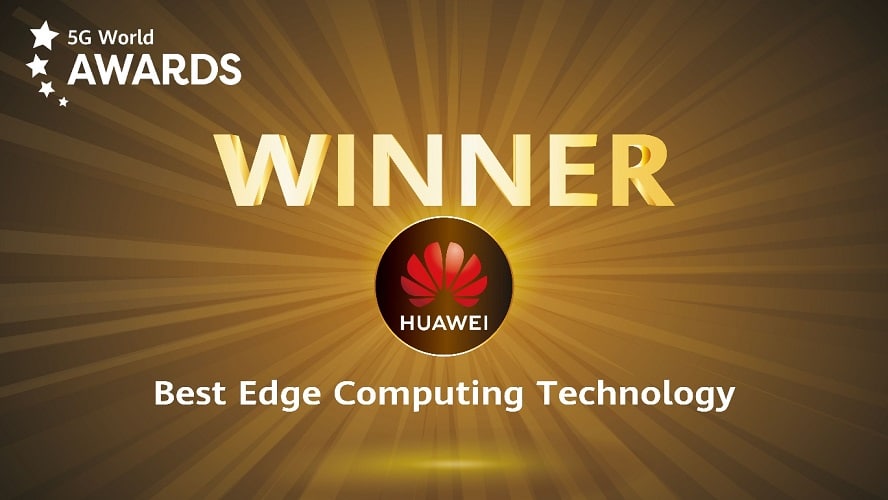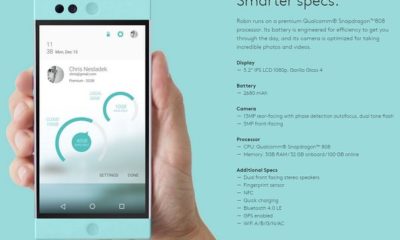Tech
Huawei Deterministic Networking Oriented 5G MEC Solution Awarded Best Edge Computing at the 5G World Summit

At the 2020 5G World Summit hosted by Informal Tech, Huawei Deterministic Networking Oriented 5G MEC Solution won the Best Edge Computing award, a testament to Huawei as a highly recognized player in the industry when it comes to innovation in 5G edge computing technologies and commercial practices.
More and more applications in 5G have differentiated and deterministic requirements. To this end, Huawei introduces the 5GDN, offering customers a predictable and differentiated service experience through manageable, verifiable, and deterministic virtual private mobile networks.
The 5G MEC solution is the key to the 5GDN. It leverages ultra-high-performance heterogeneous computing hardware to dynamically establish intelligent connections, so as to satisfy differentiated and deterministic requirements from vertical industries. Thanks to the MEC solution, carriers can provide a wide variety of new business at the network edge and steer digital transformation towards a new and exciting world.
To provide optimal service experience and exceptional reliability, Huawei MEC solution harnesses a range of advanced technologies. For example, Huawei 5G MEC platform steers traffic based on information, such as URLs, UE location, destination port numbers/IP addresses in different scenarios. Any traffic steering policies can be tailored according to service requirements. The MEC solution uses time sensitive networking (TSN) technology to limit latency to no longer than 1ms. Not only this, but the solution changes compression algorithms according to bandwidth conditions in real time to ensure top-tier service experience. It also uses open-source containers with enhanced security and adopts the C/U full mesh networking to deliver 99.999% availability or higher.
Fine-grained ultra-high-performance heterogeneous computing capabilities improve service processing efficiency by a landslide. Huawei 5G MEC solution is compatible with various hardware platforms, such as x86 and Arm, to provide high performance and enhance integration with lower power consumption. The user plane itself is programmable and orchestrates resources according to traffic flow types. It leverages hardware acceleration capabilities such as GPU, NP, and AI in different edge service scenarios to achieve maximized service performance. In addition, user plane functions are integrated in an all-in-one device to provide plug-and-play applications and reduce service rollout duration.
The solution uses the open-source platform to swiftly integrate applications. Huawei MEC platform supports integration with third-party applications without the need for code adaption. In addition, a single-stack online suite comes in handy for application development, and cLab opens abundant production-like environments for extensive integration and verification. Thanks to this extensive support, industry customers can easily and efficiently roll out service.
Huawei and industry partners delve into MEC and 5GDN applications in varying fields. They have successfully carried out multiple showcases in each area they embark in, including Haier’s smart manufacturing, Wonderland of Mountains and Rivers in the Beijing Expo, Yangshan smart port, and China Southern Power Grid’s smart grids. These efforts have significantly boosted the development of 5G applications, improved 5G service experience, accelerated the convergence of 5G and vertical industries, and helped provide better services for various industries.
Huawei will continue to increase R&D investment in 5G to make further technical breakthroughs and will work with industry organizations, operators, and partners to promote MEC development, foster new businesses at the network edge, and bring the power of 5G to all economy sectors.
-

 Phones6 months ago
Phones6 months agoHow Do I Know if My Phone Supports AR?
-

 Tech6 months ago
Tech6 months agoDoes Astigmatism Affect Your VR Experience?
-

 Business5 months ago
Business5 months agoHow Do You Make an AR Without Coding?
-

 Phones5 months ago
Phones5 months agoWhat To Do About That Weird Notification Sound on Android?
-

 Tech5 months ago
Tech5 months agoHow Can I Get Google Drive 1TB for Free?
-

 Phones5 months ago
Phones5 months agoHow Does SnapDrop Work? – Instant File Sharing Made Easy
-

 Tips and Tricks5 months ago
Tips and Tricks5 months agoCan You Use Windows VR for Sculpting?
-

 Tech4 months ago
Tech4 months ago5 things you’ll miss after switching to iPhone from Android































